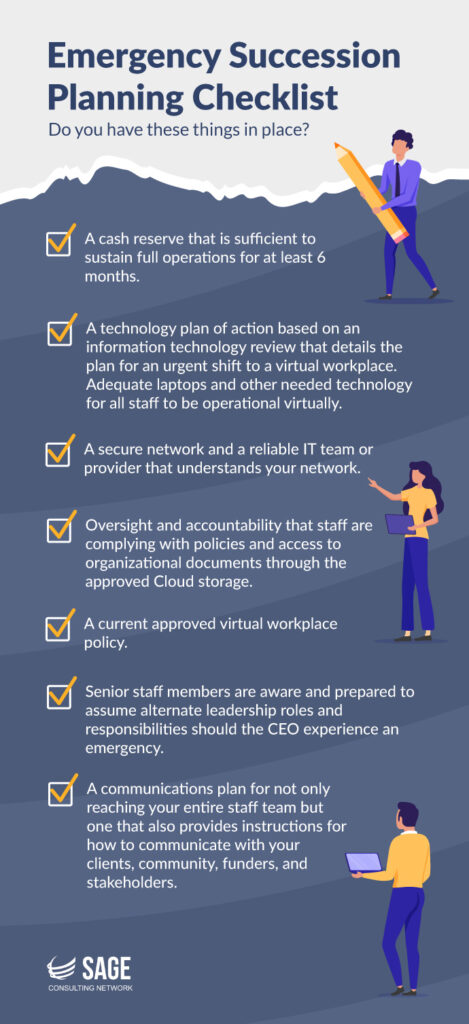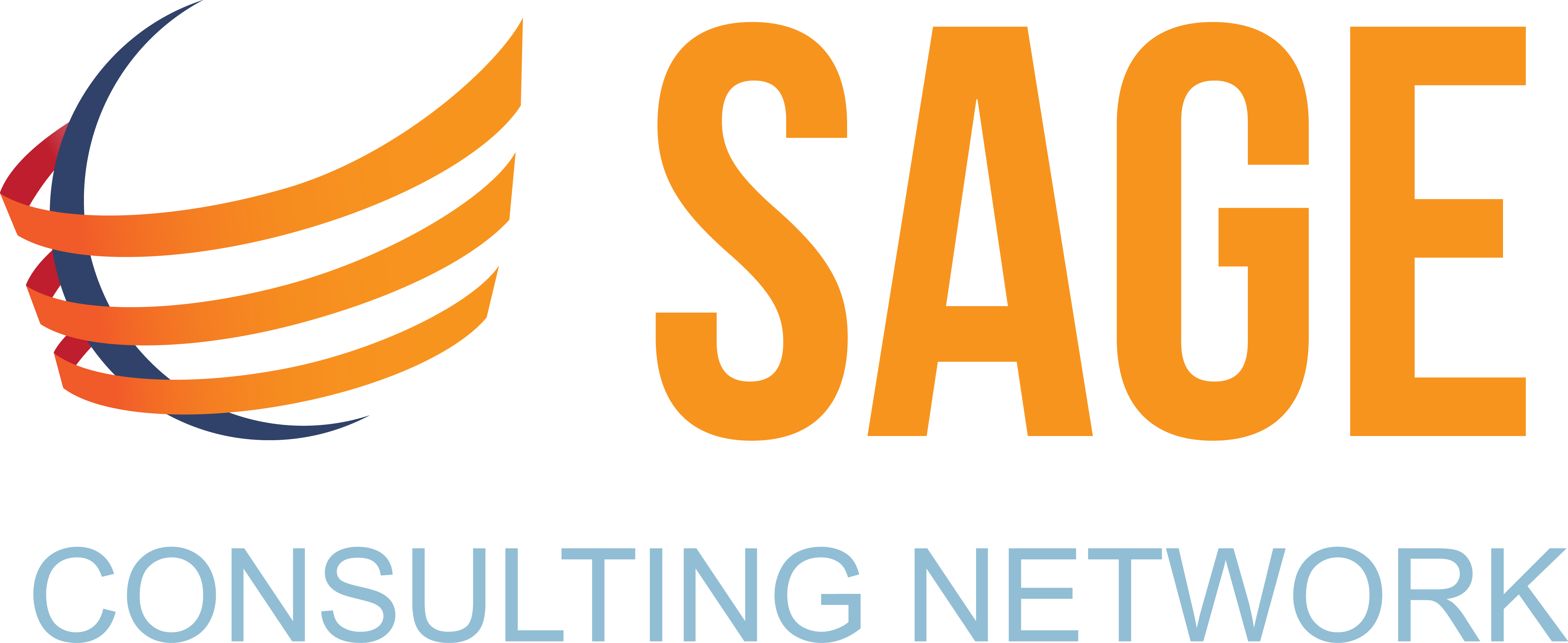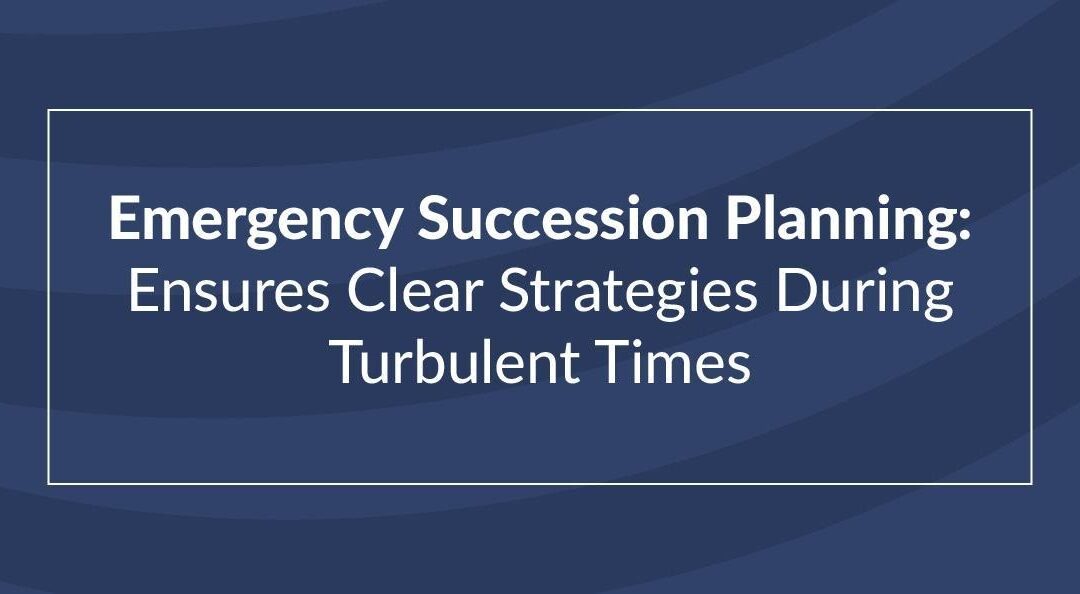Every nonprofit organization needs to have an Emergency Succession Plan.
The majority of US corporations have been caught off guard by the devastating and wide-ranging disruptions that have resulted from COVID-19’s global pandemic impact. There are also situations nonprofit organizations are faced with that can be predicted in an “expect the unexpected” kind of way like the sudden and unexpected exit of someone in a leadership role. It’s overwhelming and heartbreaking to think about the organizations who suddenly and tragically lost their executive leaders as a result of COVID-19.
While the exact nature of most emergencies can’t be planned out and detailed ahead of time, if you have no plan at all, you’re going to be left scrambling.
Whether you know a leader will be retiring in six months or are faced with a sudden, unexpected global virus, having a succession plan will help you manage the turbulence of sudden and/or planned change.
Why don’t most nonprofit organizations engage in succession planning?
There are a variety of reasons succession planning falls by the wayside. Some nonprofit leaders avoid succession planning because they think they can’t afford it. Some minimize the extent of the disruption emergencies can have on the overall short-term viability and long-term sustainability of the organization. And some executives fear that initiating succession planning might signal to the board the need for a leadership change.
The reality is, boards and executives can’t afford NOT to proactively plan for change and emergencies.
Regardless of your organization’s size, budget, or industry, it’s imperative that you prioritize creating three different kinds of succession plans. Organizations need to commit time to better understand the usefulness of the following types of plans:
- Emergency Succession Plan
- Departure-Defined Succession Plan
- Internal Leadership Development Plan
Does Your Organization Need an Emergency Succession Plan?
Short answer: Yes.
It can happen at any time and to any organization. An emergency can be so many things: natural disasters, pandemics, an unexpected illness or disease, death, or sudden unplanned job opportunity.
Emergencies tend to be very emotional and stressful times. A plan helps you to execute amidst these complex circumstances.
Every organization that is providing a service to the community, needs to have a succession plan that helps them in times of an emergency to know how they’re going to function. In other words, your emergency succession plan is your organization’s systems approach that will guide you through every disruption. What Are the Benefits to Having an Emergency Plan?
Being prepared is necessary. Knowing what to do during a stressful time when emotions run high helps organizational leaders and the board work together effectively.
An Emergency Plan provides a natural process for internal leadership development.
Emergency plans should be instructive and answer the questions “who is next in charge? In advance of this critical call to action, your board has to ask “is that person ready”?
The Board and its executive should consider the best candidates for leadership development and cross-training so these identified individuals are prepared to step up in an emergency situation.
Ideal emergency planning allows sufficient time for a thoughtful process of reviewing skill sets, strengths and weaknesses, open communication, and determining how to support internal staff development and readiness for emergency succession.
This plan helps organizations understand the financial implications and impact of an emergency.
Emergencies can be costly and it’s clear that emergencies have an economic impact on organizations. Running possible budget scenarios in advance will help your nonprofit understand its vulnerabilities and you can then begin to work to lessen these risks. Having the plan helps the organization prepare projections on the budget impact. Think about what emergencies cost and begin to work on building cash reserves. In times of an emergency, you may not be able to generate the same revenue. Donor strain can dry up or you may have some other sources of delay in receiving funding.
Do you have these things in place?

How to Develop an Emergency Succession Plan
Developing an Emergency Succession Plan is something that nonprofits can accomplish with a dedicated team. If it’s within your budget, it is typically more effective to have an expert consultant work with you on this process.
The first step in developing any plan is to have a meaningful conversation with the board and senior leadership team about whether or not you’re ready for an emergency – such as a local natural disaster or the sudden loss of the CEO.
One of the biggest pieces of this puzzle is knowing how leadership functions so that their duties don’t fall through the cracks. Your board needs to know what your executive leader’s responsibilities are ahead of time and these should be detailed in the plan so that they can be picked up by acting or interim leaders if necessary. This requires a deeper understanding that goes beyond the typical executive position description.
Having at hand a comprehensive communications plan that provides transparency and structure to manage crisis communications is invaluable. Your team has to be prepared to communicate accurately about your operations throughout the emergency. Every organization should have a centralized communication database where they can access information on how to reach funders, vendors, and clients to keep them informed.
The popular quote “ never let a good crisis go to waste” is never more relevant than now. Right now, your organization can begin emergency planning by capturing the procedures, communications, and responsibilities in real-time. Start now to be intentional about documenting how you’re handling this current emergency.
Another method to inform your succession planning is to debrief after emergencies take place. Survey your staff, clients, and funders to gather information about how they feel your organization managed the situation. If possible, speak directly with those involved to determine what went well and what needs improving for the next one. If the emergency involved an unplanned CEO absence or departure don’t shy away from asking specifically how staff, clients, stakeholders, and funders experienced this departure.
Your planning has been successful when your entire team knows about the plan and has been involved in its development. A successful process provides the structure for the board to examine its readiness across essential elements of governance, structure, and operations. Success is reflected when the board, executive, senior leadership team, and staff understand their roles and how they are expected to be executed in times of an emergency.
One of the best options to ensure you have a comprehensive plan is to engage an experienced consultant. Consultants partner with the board and leadership team to create an emergency succession plan that is specifically designed to structure your organization’s emergency response.
If you want to leverage the experience of someone who has extensive experience working with boards to develop emergency succession plans, contact me.


Recent Comments